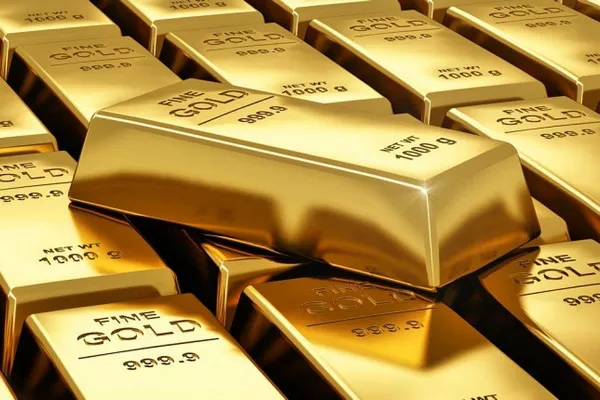Gold has long been a symbol of wealth and a reliable store of value. Its price fluctuates based on various economic factors, geopolitical events, and market sentiment. Understanding the historical price of gold provides insights into economic trends and investor behavior. This article delves into the price of gold in 1975, exploring the factors that influenced its value, significant events of the time, and its implications for investors and the global economy.
The Historical Context of Gold Prices
1. Overview of Gold as an Investment
Gold has been prized for centuries, not only for its beauty but also for its ability to retain value. As a precious metal, it serves various purposes, including:
Jewelry and Ornamentation: Gold is widely used in jewelry, making it a significant part of global demand.
Investment Vehicle: Investors buy gold as a hedge against inflation and economic uncertainty.
Industrial Uses: Beyond its aesthetic appeal, gold has applications in electronics, medicine, and other industries.
2. Factors Influencing Gold Prices
Gold prices are influenced by multiple factors, including:
Supply and Demand: The availability of gold and its demand in various sectors directly affect its price.
Inflation: When inflation rises, gold often becomes a preferred investment as it retains purchasing power.
Currency Values: The strength of the U.S. dollar impacts gold prices; a weaker dollar typically leads to higher gold prices.
Geopolitical Stability: Political unrest or uncertainty can drive investors toward gold as a safe haven.
Gold Prices in 1975: A Detailed Analysis
1. Yearly Overview of Gold Prices
In 1975, gold experienced significant price fluctuations, reflecting the economic conditions of the time. The average price of gold in 1975 was approximately $160.25 per ounce.
Monthly Breakdown
January: The year began with gold priced around $160.
April: Prices fluctuated and reached about $170.
July: Mid-year saw gold prices peak at approximately $190.
December: By the end of the year, gold settled around $160.
2. Economic Factors at Play
Several key economic factors contributed to the price movements of gold in 1975:
Inflationary Pressures
The early to mid-1970s were characterized by high inflation, which peaked during this period. The U.S. faced significant economic challenges, including:
Oil Crisis: The 1973 oil embargo led to soaring energy prices, contributing to overall inflation.
Rising Consumer Prices: Inflation reached double digits, eroding purchasing power and prompting investors to seek refuge in gold.
The End of the Gold Standard
In 1971, President Nixon ended the Bretton Woods system, effectively severing the link between the U.S. dollar and gold. This pivotal event:
Increased Volatility: The transition created uncertainty in currency markets, prompting many investors to turn to gold.
Market Speculation: With the gold standard dismantled, speculation in gold markets surged, leading to price fluctuations.
3. Global Economic Climate
The global economic landscape in 1975 was tumultuous, characterized by:
Stagflation: The U.S. faced stagnant economic growth coupled with high inflation, leading to widespread concern and uncertainty.
Political Unrest: Events like the Vietnam War’s aftermath and various conflicts contributed to geopolitical instability, driving demand for gold.
Comparing Gold Prices: 1975 vs. Other Years
To understand the significance of gold prices in 1975, it is helpful to compare them to prices in surrounding years:
1. Historical Prices
1974: The price of gold averaged around $154.00 per ounce.
1976: The average price rose to approximately $124.74, reflecting market corrections and changing economic conditions.
2. Long-Term Trends
The fluctuations of 1975 can be contrasted with longer-term trends:
1980 Surge: Gold prices peaked dramatically in 1980, exceeding $800 per ounce due to ongoing inflation and geopolitical tensions.
1990s Stabilization: After the 1980s boom, gold prices stabilized, averaging around $300 per ounce in the 1990s.
The Implications of Gold Prices in 1975
1. Investment Strategies
The price fluctuations of gold in 1975 prompted various investment strategies:
Hedging Against Inflation: Investors turned to gold as a hedge against rising prices, often purchasing physical gold or gold-backed securities.
Market Speculation: The volatility of gold prices attracted speculators looking to profit from short-term price movements.
2. Central Bank Policies
Central banks around the world began to adjust their policies in response to rising gold prices:
Increased Reserves: Some central banks increased their gold reserves as a safeguard against currency fluctuations.
Monetary Policy Adjustments: Central banks recognized the need to address inflationary pressures through tighter monetary policies.
The Legacy of Gold Prices in 1975
1. Influence on Future Markets
The events of 1975 and the corresponding gold prices set a precedent for future markets:
Modern Investment Vehicles: The rise of gold exchange-traded funds (ETFs) and other investment vehicles can trace their roots back to the increased demand for gold during this period.
Inflation and Gold’s Role: The relationship between inflation and gold continues to influence investor behavior today.
2. Lessons Learned
Investors today can draw valuable lessons from the gold market of 1975:
Diversification: Gold remains a crucial component of diversified investment portfolios, especially during times of economic uncertainty.
Economic Indicators: Monitoring economic indicators such as inflation and geopolitical stability can provide insights into future gold price movements.
Conclusion
The price of gold in 1975 reflects a complex interplay of economic factors, geopolitical events, and market sentiment. With an average price of approximately $160.25 per ounce, 1975 was a pivotal year in the history of gold investment. As we continue to navigate a dynamic economic landscape, understanding the historical context of gold prices helps investors make informed decisions and appreciate the enduring value of this precious metal. Whether as a hedge against inflation or a strategic investment, gold’s significance remains relevant in today’s financial markets.
Related topics:
What Gold Cost in 1974: A Historical Analysis
What is Gold Price in UK Today(October 23)
What is the Price of Gold in India Today (October 23)


